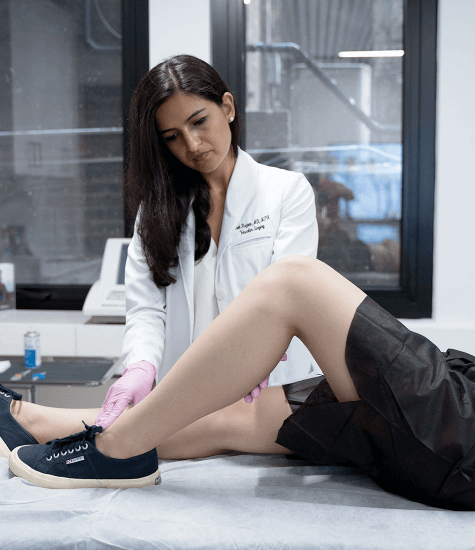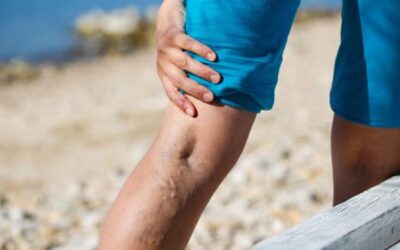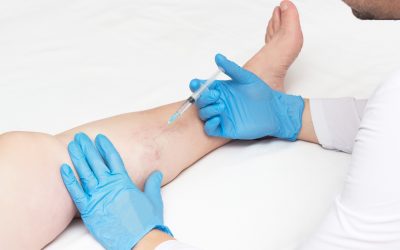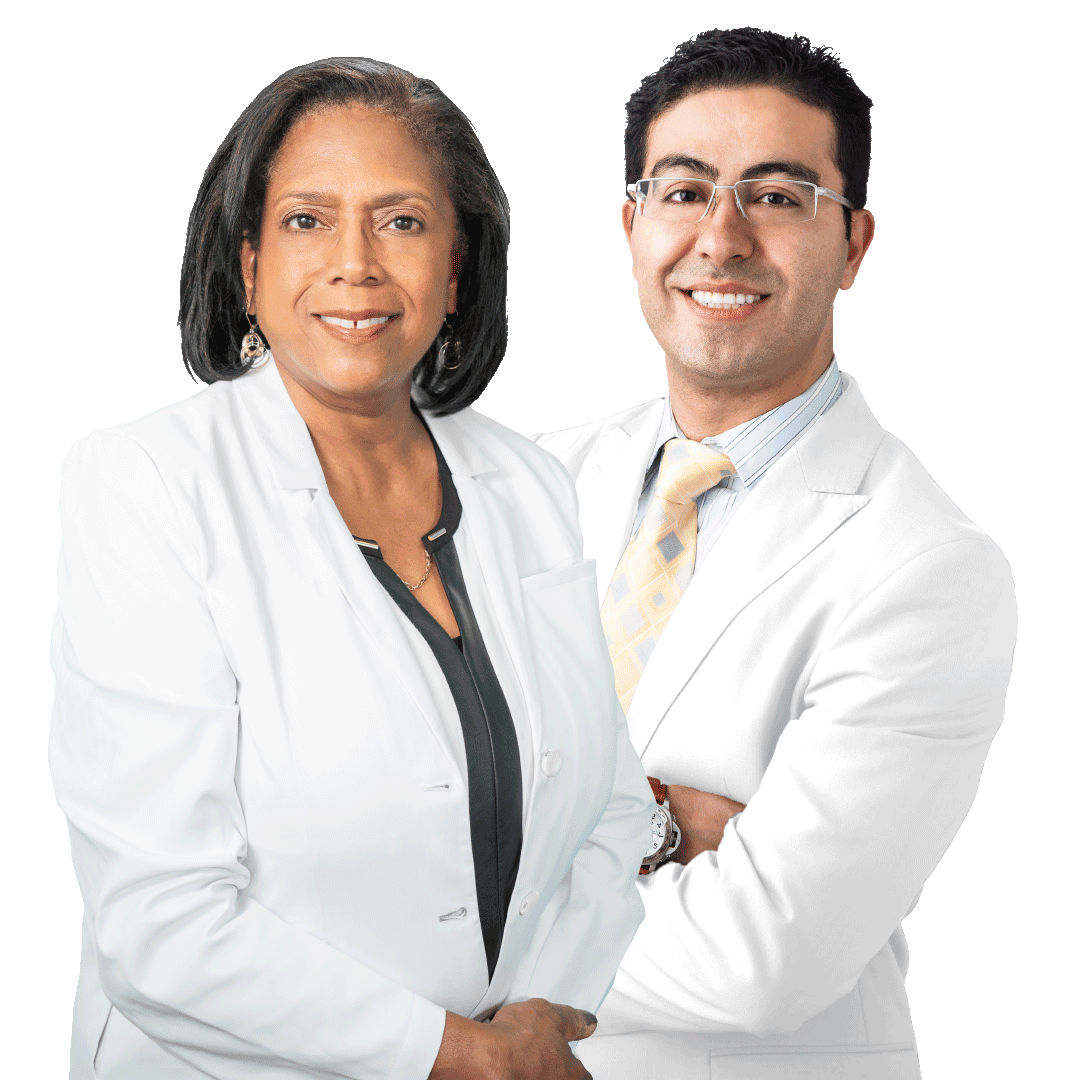Top Maryland Vein Doctors
Vein Treatment: A Preventive Measure
While maintaining healthy veins is a priority for many, it’s important to acknowledge that preventing varicose veins and spider veins entirely is not always within our control. These vascular conditions can be influenced by a combination of factors, including genetics, lifestyle, and age, making them a complex issue to address definitively. However, what we can do is adopt preventive measures and lifestyle choices that help mitigate the risks and delay or minimize the development of these troublesome vein issues.
This article aims to help you identify potential risk factors for vein conditions and implement lifestyle changes to reduce the risk of spider veins and varicose veins. We also describe minimally invasive vein treatments for existing vein problems.
Prevention Starts With Understanding Your Risk
To effectively mitigate the risk of developing varicose veins and spider veins, it’s crucial to begin by assessing your individual risk factors. Most vein problems occur because of chronic venous insufficiency, a dangerous medical condition caused by the collapse or malfunctioning of vein valves. Healthy veins have valves that allow blood to flow toward the heart but not backward due to gravity. When your vein valves malfunction or collapse, gravity forces blood to flow backward and accumulate in the leg veins, leading to spider veins and varicose veins.
Numerous factors can weaken your vein valves, cause ineffective blood flow, or lead to the accumulation of blood in leg veins. A family history of these conditions can significantly increase your susceptibility. Moreover, age and gender can play a role, with women being more prone to vein issues, especially during pregnancy and menopause. Identifying these risk factors early on allows you to take a proactive approach to reduce the risk of vein problems or at least delay their onset by a few months or years.
Risk Factors for Vein Problems:
- Family History: Genetic predisposition plays a significant role in the development of varicose veins and spider veins. If your close relatives have had these conditions, your likelihood of experiencing them increases. This familial link suggests a genetic component that can make your vein walls less resilient, making them more susceptible to vein valve dysfunction.
- Age: Vein health naturally undergoes changes as we grow older. Over time, the veins can lose some of their elasticity and strength. This age-related weakening can make it easier for veins to become enlarged and visible. As a result, aging is considered a risk factor for the development of varicose veins and spider veins.
- Gender: Gender also plays a role in vein health. Women tend to be more prone to vein issues, especially during certain life stages. Hormonal changes associated with pregnancy, menstruation, and menopause can affect vein function. The female hormone estrogen can relax vein walls, potentially contributing to vein dilation and valve dysfunction.
- Prolonged Sitting or Standing: Occupations or activities that involve extended periods of sitting or standing, such as nursing, teaching, and desk jobs, can impede proper blood circulation in the legs, leading to vein issues. The constant force of gravity can cause blood to pool in the lower extremities, increasing the likelihood of vein valve malfunction.
- Obesity: Carrying excess weight places added pressure on the veins, particularly those in the legs. This increased pressure can cause veins to work harder to circulate blood, potentially leading to vein wall stretching and valve dysfunction. Maintaining a healthy weight is important in reducing the risk of vein issues.
- Lack of Physical Activity: A sedentary lifestyle can negatively impact vein health. Regular physical activity promotes proper blood circulation and helps the calf muscles contract, assisting in pumping blood back to the heart. Without adequate physical activity, blood flow may become sluggish, increasing the chances of vein problems.
- Injury or Trauma: Previous injuries to the legs or damage to blood vessels can increase the risk of vein issues. Scar tissue and damage to veins can disrupt normal blood flow, potentially leading to the development of varicose veins or other vascular problems.
Mitigating the Risk of Vein Problems
The primary goal of preventive measures for vein health is to improve blood circulation and reduce the strain on leg veins. Preventative measures like exercise and wearing compression stockings facilitate the efficient movement of blood from the legs back to the heart. By doing so, they aim to alleviate pressure on the veins, minimize the pooling of blood, and prevent the development or worsening of vein conditions.
Promoting proper circulation not only ensures that oxygen and nutrients reach tissues efficiently but also reduces the likelihood of blood stagnating in the lower extremities. Additionally, preventive measures often emphasize elevating the legs and engaging in activities that encourage the contraction of calf muscles, aiding in the upward movement of blood. By implementing these methods, you can reduce their risk of varicose veins and spider veins, or prevent existing conditions from progressing.

We know health insurance is confusing so we will help you check if you’re covered:
FREE Coverage Checker:
Lifestyle Changes to Prevent/Mitigate Vein Problems:
- Regular Physical Activity: Exercise, such as brisk walking, swimming, or cycling, encourages proper blood circulation throughout the body. It also strengthens the muscles in your legs, which plays a vital role in facilitating the return of blood to the heart. Regular exercise can prevent blood from pooling in the leg veins, reducing the risk of vein issues.
- Maintain a Healthy Weight: Maintaining a healthy body weight is crucial for vein health. Excess weight places added pressure on the veins, particularly in the legs. This increased pressure can lead to vein wall stretching and valve dysfunction, making you more susceptible to varicose veins. Achieving and maintaining an ideal weight reduces this risk.
- Frequent Leg Elevation: Elevating your legs whenever possible is an effective way to promote healthy circulation and relieve strain on the veins. Elevating your legs above the level of your heart allows gravity to assist in the efficient return of blood from the legs to the heart. This is particularly helpful for reducing swelling and discomfort in the lower extremities.
- Avoid Prolonged Sitting or Standing: Prolonged periods of sitting or standing can hinder proper blood flow in the legs, increasing the risk of vein-related issues. To prevent blood from pooling in the veins, it’s essential to take breaks and move around regularly. Simple activities like walking or stretching can help maintain healthy blood circulation.
- Wear Compression Stockings: Compression stockings are specially designed to provide graduated pressure on the legs. They support the natural function of veins by assisting blood flow from the extremities back to the heart. If you have a family history of vein issues or are at risk, wearing compression stockings can be an effective preventive measure.
- Hydration: Staying hydrated is essential for maintaining blood viscosity. Well-hydrated blood is thinner and flows more smoothly, reducing the risk of clot formation and vein issues. Drinking an ample amount of water daily is a simple way to support overall vascular health.
- Quit Smoking: Smoking is detrimental to blood vessels and circulation. The chemicals in tobacco can damage blood vessels, reduce blood flow, and impair vascular health. Quitting smoking is a critical step in promoting vein health and improving overall well-being.
- Leg Exercises: Incorporating leg exercises into your daily routine can be highly beneficial. Simple exercises like ankle pumps and calf raises stimulate blood flow in the legs and strengthen the calf muscles, both of which contribute to healthy vein function. These exercises can be particularly useful if you have a sedentary lifestyle or are at risk of vein issues.
Minimally Invasive Treatments for Vein Conditions
When it comes to addressing vein conditions, advancements in medical technology have made it possible to opt for minimally invasive treatments that offer effective results with minimal discomfort and downtime. These procedures have revolutionized the way vein issues are treated, providing patients with alternatives to traditional surgery. Minimally invasive vein treatments can remove visible spider veins and varicose veins and address the underlying vein disease, thus offering long-lasting relief from vein problems.

Visit Our Maryland Vein Treatment Center
Minimally Invasive Vein Treatments Include:
- Sclerotherapy: Sclerotherapy is a widely used procedure for treating spider veins. During this minimally invasive treatment, a specialized solution is injected directly into the affected veins. This solution causes the veins to collapse and eventually fade away, leaving behind smoother, more even-toned skin. Sclerotherapy is virtually painless and typically requires no downtime, allowing patients to resume their daily activities shortly after the procedure.
- Endovenous Laser Ablation (EVLA): EVLA is a highly effective treatment for varicose veins. This minimally invasive procedure employs laser energy to seal off the malfunctioning vein, redirecting blood flow to healthier ones. EVLA offers rapid relief from varicose vein symptoms and is associated with minimal discomfort and a quick recovery period, making it an attractive option for those seeking lasting relief from their vein conditions.
- Radiofrequency Ablation: Similar to EVLA, radiofrequency ablation utilizes heat generated by radiofrequency energy to close off problematic veins. This minimally invasive technique offers a less traumatic alternative to traditional vein surgery and yields minimal post-procedure discomfort, allowing patients to return to their daily routines with ease.
- VenaSeal: VenaSeal is a cutting-edge treatment that uses a medical adhesive to seal varicose veins. This approach provides immediate relief from vein-related discomfort and has minimal post-procedure discomfort. Patients can often return to their daily activities almost immediately, and there’s no need to wear compression stockings.
- Ambulatory Phlebectomy: For larger varicose veins, ambulatory phlebectomy may be recommended. This minimally invasive surgical procedure involves the removal of veins through tiny incisions. Despite being a surgical technique, ambulatory phlebectomy results in minimal scarring and allows you to resume daily activities immediately.
Visit Maryland Vein Treatment
At Maryland Vein Treatment, we understand that each patient is unique. That’s why we always begin with a thorough evaluation, including duplex ultrasound, to diagnose the root cause of your vein issues. This allows us to create a personalized treatment plan. Take preventive measures to maintain healthy veins, and if you’re already dealing with these issues, trust Maryland Vein Treatment to provide you with effective and minimally invasive solutions. Our board-certified vein doctors are here to help you achieve healthier legs. Contact us today to schedule your consultation.



